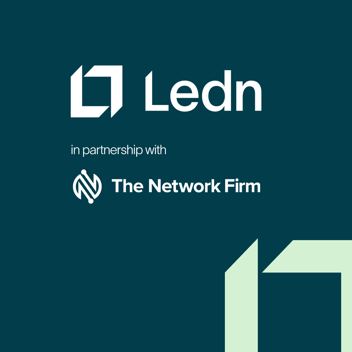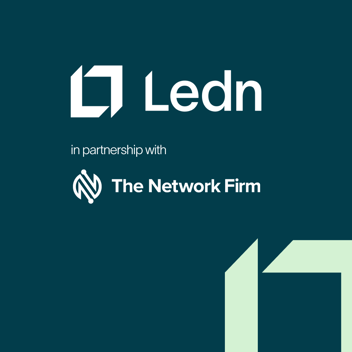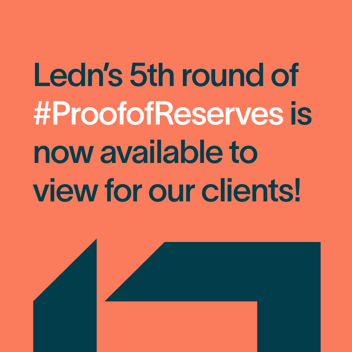Proof of Reserves in Crypto, Explained
.png?width=1600&height=900&name=Proof%20of%20Reserves%20in%20Crypto%20Explained%20(1).png)
In this article, we'll explain:
- What Proof of Reserves is
- How Proof of Reserves works
- Why Proof of Reserves makes cryptocurrency lending and borrowing more secure and transparent
Put simply, Proof of Reserves, or PoR, shows solvency. Crucially, this proof does not come from a bank or crypto lender, but an impartial independent third party. That means that when a platform offers Proof of Reserves, you will be able to review the report to see whether the platform has sufficient assets to cover its liabilities.
What is Proof of Reserves?
PoR is a transparent procedure that shows an institution, such as a bank or cryptocurrency exchange, has the assets and liabilities it claims to have. It ensures transparency and builds trust within financial ecosystems.
Independent accountants check the platform or lender has enough assets to cover all liabilities, such as customer balances, at a certain point in time.
A PoR attestation is binary: at any moment in time, the company is either solvent or not. There is no room for ambiguity, which ensures a clear picture of financial viability.
Proof of Reserves in Traditional Finance
In traditional finance, banks use PoR to show they possess the funds they're holding for customers. This prevents banks from lending out more money than they actually have.
Proof of Reserves in Crypto
In the crypto realm, PoR shows users that digital platforms hold the cryptocurrencies that they claim to.
Blockchain technology makes it simple for crypto companies to demonstrate PoR. This is because the blockchain tracks debits and credits in real-time. Any digital asset is verifiable at any time by anyone with an internet connection.
To learn more about this, check out our Ultimate Guide to Crypto Lending.
The Importance of Proof of Reserves for Crypto Lending Platforms
Just because crypto companies can provide PoR, they don’t all choose to do so - for now.
PoR is gaining popularity. FTX’s collapse in November 2022 and Binance, another crypto exchange, stressing the need for transparency are among the factors behind this shift.
Read more: The Risks Of Crypto Lending
In November 2022, nine exchanges – Binance, Gate.io, KuCoin, Poloniex, Bitget, Huobi, OKX, Deribit and Bybit– said they would start publishing PoR.
As regulators start to establish rules to safeguard consumers, PoR is increasingly being seen as a tool users can rely on to ensure customer funds are secure while maintaining clarity and safety. Users too are demanding greater transparency from their exchanges.
Read more: The 8 Best Crypto Savings Accounts For 2023
Proof of Reserve for Off-Chain Assets
On-chain assets are recorded on a blockchain, so are easily verifiable.
Off-chain assets are recorded and stored in centralized systems, such as bank accounts, databases, or physical assets. They don’t have a trail on the blockchain. Examples of off-chain assets are cash, gold, real estate, and stocks.
Techniques like Merkle Tree Analysis ensure that these assets are accurately reflected in Proof of Reserves. We’ll go into this in detail below.
The Process Behind Verifying a Crypto Exchange’s Reserves
There are three key stages in a PoR. Here's a breakdown of those stages:
Proof of Liabilities
Calculate Total Liabilities
The initial step involves determining the exchange's liabilities, or the outstanding cryptocurrency balances owed to customers. This is done by summing up all the customer account balances.
Merkle Tree Construction
The exchange constructs a Merkle tree using cryptographic hashes of customer wallets and their corresponding owed amounts. This cryptographic structure ensures data integrity and privacy.
Hashing for Fraction Factor and Merkle Root
The computed fraction factor's hash and the Merkle tree's root are derived from the constructed tree. This involves pairing and hashing the nodes within the tree to create tiers, ultimately leading to the generation of the root hash.
Proof of Reserves
Compute Total Assets
This phase focuses on the exchange's assets, or the cryptocurrencies held on the blockchain. The sum of crypto address balances is calculated if the exchange has control over the private keys of those addresses.
Cryptographic Proof of Ownership
The exchange uses cryptographic techniques to demonstrate ownership of the cryptocurrency addresses. By signing the public key associated with a crypto address using the private key, the exchange confirms ownership. For added security, a nonce (like the hash of the most recent blockchain block) is also signed to ensure the validation of the signature. The outcomes include the sum and hash of address balances.
Deterministic Preprocessing
Rather than parsing the entire blockchain, a deterministic preprocessor is used. This aggregate of publicly available data ensures consistent and reliable results. Deterministic functions produce the same outcomes given identical inputs, crucial for consensus in a blockchain network.
Proof of Solvency
POR Results
The final outcome of the POR is a binary determination of solvency – whether the exchange's assets surpass its liabilities. If the exchange is solvent, the result is true. Otherwise, it's false.
Attestation
An attestation, acting as a signature, accompanies the PoR results. This attestation confirms the trustworthiness of the environment in which the POR software was executed and verifies the hashes of executed programs and platform measurements.
User Verification
Users can independently verify the calculation's accuracy by referring to the Merkle tree's root, ensuring that their account balances are considered in the process.
Third-Party Accountants & Independent PoR
Third-party accountants are key in maintaining transparency and credibility. These accountants are experts in financial assessment and cryptographic analysis. Their role is to scrutinize transaction records, cryptographic proofs, and other financial evidence to confirm the presence of the claimed assets and liabilities.
As they operate independently, they evaluate objectively, eliminating conflicts of interest.
Chain Assets & Merkle Tree Analysis
Chain assets refer to cryptocurrencies that are actively traded on public blockchains. To ensure the accuracy of these assets in the reserve count, Merkle Tree Analysis is applied.
This method involves organizing balances of chain assets into a hierarchical tree structure. Each level of the tree contains cryptographic hashes of the data in the layer below. This hierarchical arrangement allows accountants to swiftly verify the integrity of large amounts of data by comparing the Merkle root with the known data.
The cryptographic nature of this process ensures that any alteration to the data would be instantly detectable.
.png?width=1600&height=900&name=Proof%20of%20Reserves%20in%20Crypto%20Explained%20(2).png)
Single Hash Analysis & Cryptographic Proofs
Single Hash Analysis and Cryptographic Proofs bolster the verification process.
Single Hash Analysis involves creating a single hash value that represents all the data being analyzed. This hash acts as a digital fingerprint, offering a concise summary of the data.
Cryptographic Proofs use mathematical algorithms to demonstrate the authenticity of the asset and liability claims. These techniques use the principles of cryptography to provide an extra layer of confidence that the reserves are accurate and untampered.
PoR Reports & Balance Sheets
Balance sheets and audit reports provide a breakdown of assets, liabilities, and equity, giving users insight into the financial health of the platform.
Audit reports set out the exchange's financial stability. They explain the methods used and the results obtained during the verification process. This helps users to make informed decisions, ensuring they have a clear understanding of the health of the platforms they're investing with.
How does a Proof of Reserves work?
Initial Snapshot and Merkle Tree Construction:
The third-party accountant or accounting firm initiates the process by capturing an anonymized snapshot of the custodian institution's balances.
These balances are then structured into a Merkle tree, a cryptographic structure comprising authenticated branches connected through hash codes.
Collection of Individual User Signatures
The accounting firm gathers unique user signatures from each account holder.
Validation of Full-Reserve Basis
The key task is to verify whether customers' assets are maintained on a full-reserve basis. This entails confirming that the reported balances from individual contributors are at least as much as those deduced from the Merkle tree.
The digital signatures provided by users are cross-referenced with the Merkle tree records to ensure consistency.
User Transaction Verification
After the Proof of Reserves procedure, users can independently verify their transactions.
Do all crypto exchanges need to publish reserve balances?
No exchange has to publish reserve balances, but a growing number are choosing to do so. Customer expectations around transparency and the well publicised collapse of a number of exchanges are behind this shift.
Noncustodial exchanges, which don't hold user funds, operate differently. They don't require Proof of Reserves because users control their assets directly.
Challenges Faced by Crypto Exchanges in Proving Their Reserves
PoR procedures do not track where assets come from. It would be possible to borrow assets for a PoR.
Secondly, they only show a snapshot in time, rather than long-term financial health.
Thirdly, the data provided by management could be incomplete.
How Ledn handles Proof of Reserves
We believe that crypto companies should be as transparent as Bitcoin itself.
We’re proud to be the first digital asset lending company to have completed a PoR attestation with a Certified Public Accountant (who was also from a top-25 public accounting firm). Since then, we’ve conducted this procedure every six months. We believe this should be the industry standard.
The accountant surveys the total liabilities owed to our clients and the assets that we hold. Private client information is never exposed.
We create a unique, anonymized hash ID for every client reference number and every new attestation. This ID is matched with each account balance. Each client is provided with their unique ID and balance, so they can confirm that their balance was included in the attestation.
Conclusion
PoR shows solvency at a point in time, offering increased security and transparency in cryptocurrency lending and borrowing. Today, it is gaining traction in response to industry challenges and regulatory demands for transparency. The companies that, like Ledn, opt to undergo regular PoR procedures with independent third-party accountants are committed to transparency and accountability in an ever-changing crypto ecosystem.
Sponsored by 21 Technologies Inc. and its affiliates (“Ledn”). All reviews and opinions expressed are based on my personal views.



